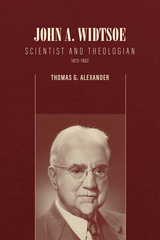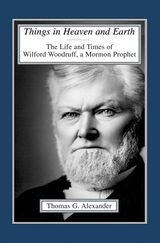
Born in Norway, John A. Widtsoe (1872–1952), was renowned for his expertise in irrigation and dry farming. His pioneering work pushed the boundaries of and contributed significantly to advancements in agricultural practices. Moreover, his forays into the field of biochemistry exemplified his relentless pursuit of scientific understanding.
Widtsoe’s journey came with challenges especially after he was called as an apostle in the Church of Jesus Christ of Latter-day Saints. As president of both Utah State Agricultural College (1907–16) and the University of Utah (1916–21), he faced controversies and obstacles head-on. Additionally, he played a significant role in overseeing the expansion of the LDS gospel in both Europe and the United States. He was highly esteemed within his church due to his ability to provide thorough and insightful explanations of various aspects of church doctrine and reconcile them with scientific truths. Throughout the early-to-mid-twentieth century, he symbolized to many members the successful integration of religious faith with secular knowledge, inspiring countless individuals to embrace both realms in harmony.

Before attaining that status of senior church apostle at the death of John Taylor in 1886, Woodruff had been one of the fiercest opponents of United States hegemony. He spent years evading territorial marshals on the Mormon “underground,” escaping prosecution for polygamy, unable even to attend his first wife’s funeral. As church president, faced with disfranchisement and federal confiscation of Mormon property, including temples, Woodruff reached his monumental decision in 1890 to accept U.S. law and to petition for Utah statehood.
As church doctrines and practices evolved, Woodruff himself changed. The author examines the secular and religious development of Woodruff’s world view from apocalyptic mystic to pragmatic conciliator. He also reveals the gentle, solitary farmer; the fisherman and horticulturalist; the family man with seven wives; the charismatic preacher of the Mormon Reformation; the astute businessman; the urbane, savvy politician who courted the favor of prominent Republicans in California and Oregon (Leland Stanford and Isaac Trumbo); and the vulnerable romantic who pursued the affections of Lydia Mountford, an international lecturer and Jewish rights advocate. He traces a faithful polygamist who ultimately embraced the Christian Home movement and settled comfortably into a monogamous relationship in an otherwise typically Victorian setting.
READERS
Browse our collection.
PUBLISHERS
See BiblioVault's publisher services.
STUDENT SERVICES
Files for college accessibility offices.
UChicago Accessibility Resources
home | accessibility | search | about | contact us
BiblioVault ® 2001 - 2024
The University of Chicago Press









